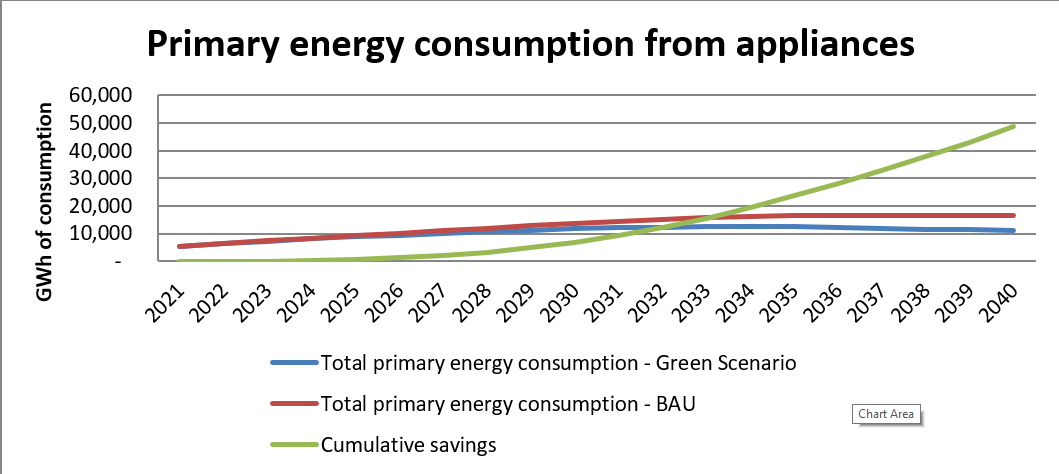Assignment news: The potential of climate-friendly cooling solutions
16 February 2021, Category: All insights, News

(This article was originally posted on: https://klimatskipromeni.mk/article/630#/index/main)
E Co. Senior consultant Morna Isaac examines the potential for green cooling technologies and practices in North Macedonia, based on a market assessment we conducted with UNDP and the Ministry of Environment and Physical Planning.
Green cooling: demand, growth and energy savings
Cooling is increasingly recognised at the EU level as needing to be dealt with and assessing cooling demand is now required as a part of aligning to the Energy Performance in Buildings Directive (EPBD) [1]. According to the International Energy Agency, cooling is the fastest-growing end use in buildings, as its energy demand more than tripled between 1990 and 2018. In a typical Macedonian building it can amount to well over 20% of primary energy demand.
While currently the penetration of space cooling devices in the Republic of North Macedonia is not 100% and general usage in terms of number of hours per year is not very high, the decision to purchase such devices is often made during heat waves. The frequency of heat waves in the country has been increasing since 1987 [2] and it is expected that as temperatures increase in the coming decades, the frequency of heat waves will continue increasing too. This factor, combined with increased affordability, will lead to the increasing penetration and usage of space cooling. Despite that, cooling is still a blind spot in the energy and climate debate, including Macedonian policies, legislation, and analysis of potential for climate change mitigation.
UNDP has supported the Ministry of Environment and Physical Planning to carry out a market study to assess the potential for “green” cooling technologies and practices in the country. The assessment came to the following key conclusions:
- Cooling is a significant and growing contributor to energy consumption – expected to increase by approximately 3x over the next 20 years. Because cooling uses electricity, its impact on primary energy consumption and / or imports is higher on a per MWh basis than, for example, transport fuel.
- Investments in efficient cooling yield positive energy savings / GHG reductions on their own, but when implemented in a way which also addresses heating demand, they are extremely beneficial. Given that the country has a lot of heating which is carried out using electricity, it would be logical to have policies in place which support more efficient solutions for both heating and cooling at the same time.
- The introduction of appropriate measures could lead to potential savings of around one third of GHG emissions and energy use versus the reference (baseline) scenario. For the year 2030, if measures are implemented at a large scale to improve both heating and cooling, the impact would be equivalent to approximately half of the proposed Macedonian enhanced Nationally Designated Contributions (i.e. over 2.6 million tonnes of CO2 peryear in comparison to a target of 5.2 million tonnes of reduction)
- When analysing the transition from inefficient heaters and inefficient cooling devices (often separate) to more efficient devices which do both, we see that the potential value of savings is huge. Over € 3.8 billion in savings over the period through 2040 versus € 512 million additional investment could be achieved.
- While the impact on jobs was not explicitly examined, it is worth noting that investing in energy efficiency implies essentially moving the money spent on (importing) energy to become money spent on construction, more efficient appliances and installation, and the jobs that are implied within these spheres.

Recommendations for measures that could reduce the growth in the use of electricity for cooling (and heating):
- Adoption of energy labelling and eco-design regulations related to cooling (and heating) devices
- Introduction of regulations for incorporating cooling requirements into building certification – including defining nearly zero energy buildings
- Adoption of the Law on Energy Efficiency Fund / sustainable financing mechanism
- Building the capacities of the Market Inspectorate to conduct regular market surveillance on implementation of energy labelling and eco design regulations as well as market actors for partnership in compliance
- Establish a platform for cooperation with all actors, including building owners and construction companies
- Development of a Building Renovation Strategy, Plan for supporting nearly zero energy buildings, and Reconstruction plan for public buildings which includes cooling aspects
- Energy Efficiency in public procurement related to heating and cooling systems and building stock
- Expansion of the National Program for promotion of RES and energy efficiency.
The video recording of the presentation can be found here.
[1] See various links at https://ec.europa.eu/energy/topics/energy-efficiency/energy-efficient-buildings/energy-performance-buildings-directive_en#energy-performance-of-buildings-standards
[2] Ministry of Environment and Physical Planning, Third National Communication on Climate Change, Skopje, 2014.
Join the conversation by posting a comment below. You can either use your social account, by clicking on the corresponding icons or simply fill in the form below. All comments are moderated.